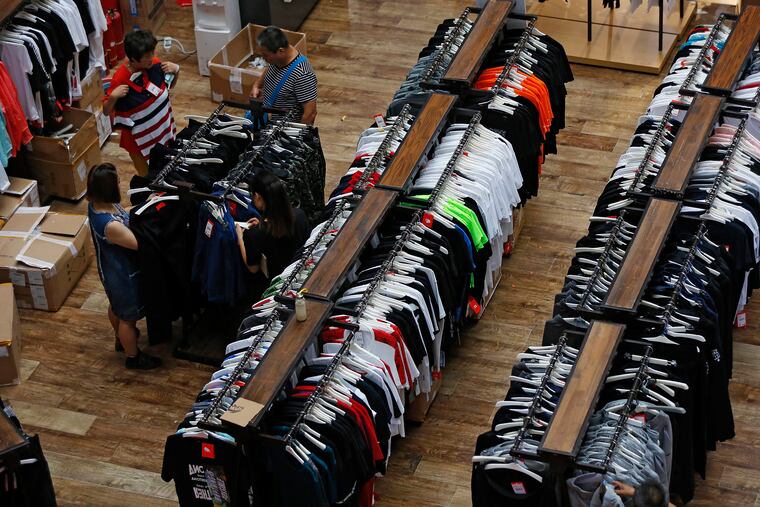China invents a different way to run an economy
It's possible that there's another way to manage macroeconomic activity — a way to stabilize the economy other than fiscal or monetary policy.

In the U.S. and other developed countries, there are three basic philosophies of macroeconomic stabilization. Each of them was present in some form during the Great Depression, and each survives to this day.
The first is Keynesianism, which centers around fiscal stimulus, mainly in the form of increased government spending. The second is monetarism, which holds that getting economies out of recession is the job of the central bank, which can lower interest rates, engage in quantitative easing, or ease monetary policy in other ways. The third school holds that recessions are a healthy and normal phenomenon, and that governments shouldn't try to fight them. This last idea was promoted by the liquidationists during the Great Depression, and enjoyed a resurgence of interest in the 1980s, eventually even winning a Nobel for one of its leading proponents.
These three approaches have been around so long that it's tempting to conclude that there aren't any others. But it's possible that there's something else out there — a good way to stabilize the economy other than fiscal or monetary policy. And it's possible China may have been the one to hit upon this alternative.
For the last quarter-century, growth in China has been remarkably stable. Though there have been ups and downs, the country has never recorded a recession in that time. During that period, real gross domestic product growth has never fallen lower than 6 percent:
Of course, those are official government numbers, and many people accuse China of fudging its statistics. Provincial and local officials have incentives to report overly rosy growth figures, and the central government may smooth out the GDP numbers to avoid having capital flee the country. Even China's premier, Li Keqiang, once called the country's economic statistics "man-made and therefore unreliable." For this reason, a number of independent observers have constructed their own measures of Chinese growth, relying on data like electricity usage to supplement the official numbers. But almost all of them conclude that China hasn't seen growth fall below zero in recent years, despite a mild slowdown in 2015.
This is remarkable. Most fast-developing countries stumble at some point. During its economic rise in the 1800s, the U.S. suffered numerous panics and depressions (as recessions were then known). Japan's catch-up growth during the postwar period was remarkably rapid and steady, but it suffered two recessions in the 1960s and 1970s. China, in contrast, has weathered both the Great Recession and its own stock-market bubble and crash without its growth ever once sliding into reverse.
How did China accomplish this feat? Monetary policy was certainly used as a stabilization tool, but its interest-rate moves haven't been particularly dramatic:
China did make use of fiscal policy in the Great Recession, running a deficit of about 7 percent of GDP in 2009:
But the stimulus was over quickly, as China ran a small surplus the next year. Fiscal policy might have been effective, but it wasn't the whole story.
In addition to spending more, China also directed banks to lend lots more money. The World Bank estimated that increased bank credit represented 40 percent of China's stimulus. Much of the lending was done by China's four large state-owned banks. The money went to infrastructure, real estate, and all kinds of corporate projects, many of which were carried out by the country's state-owned enterprises. That lending was often wasteful and probably hurt productivity, but saving the economy from going off a cliff could easily have been worth it, especially since a deep recession might have threatened the country's political stability.
In the years since the crisis, China has again and again turned to credit policy to stabilize its economy — encouraging banks to lend more when there's a risk of recession, and clamping down on credit when real estate bubbles threaten to spin out of control. In 2011 the government tightened lending in order to limit a possible housing bubble, and again in 2013, and yet again in 2017. In 2014 it eased bank lending to stimulate the economy. In 2016 it cut banks' reserve requirements to stimulate credit expansion. And recently, facing the threat of a trade war with the U.S., it reduced reserve requirements again, and encouraged lending with various other policy tweaks.
Although it's hard to get a clear picture of China's overall credit policy — because there are so many policy levers, and because so much is done behind closed doors — it appears the country is feeling out a novel approach to macroeconomic stabilization. That program focuses on asset prices, bank finance, real estate, and administrative control of banks.
Many economists would see this approach as hopelessly ad hoc, haphazard, and interventionist — not the kind of thing any developed country would want to rely on. And yet, it seems to have carried China successfully through several crises, while always averting the catastrophic financial crash that outside observers have been warning about for years.
Is there a lesson for developed economies here? Countries such as Japan and the European Union member nations use a lot of bank finance. The U.S. tends to use bond markets more, but banks — especially big banks — are extremely important in the real estate sector, which is a very important factor in the business cycle. Could developed countries create more policy tools to push banks to increase lending in recessions and cut back when bubbles threaten? Or is China sui generis — a model that can't be copied? Is China's repeated intervention in credit markets building up inefficiencies that will eventually bring the system down? There's no way to know the answers to these questions yet. But macroeconomists should think about credit policy as an important supplement to the traditional fiscal and monetary tools of recession-fighting.